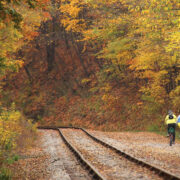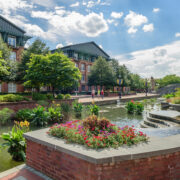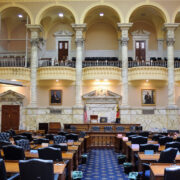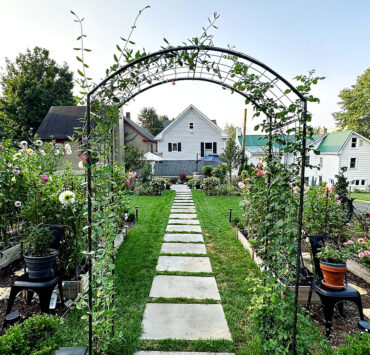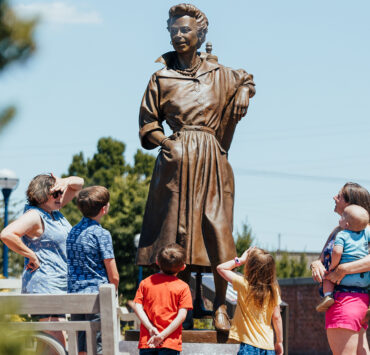Trips Inspired by Milestones in Maryland History

We’re bringing you back in time to take a look at five milestones in Maryland history. Travel from 1634 to 1952, and check out our road trip ideas to pair with each historical event.
1634 – St. Mary’s City is established as Maryland’s capital
St. Mary’s City, the first European settlement in Maryland, acted as the state capital for 61 years. In 1695, the more centrally located town that we now know as Annapolis, became the new state capital.
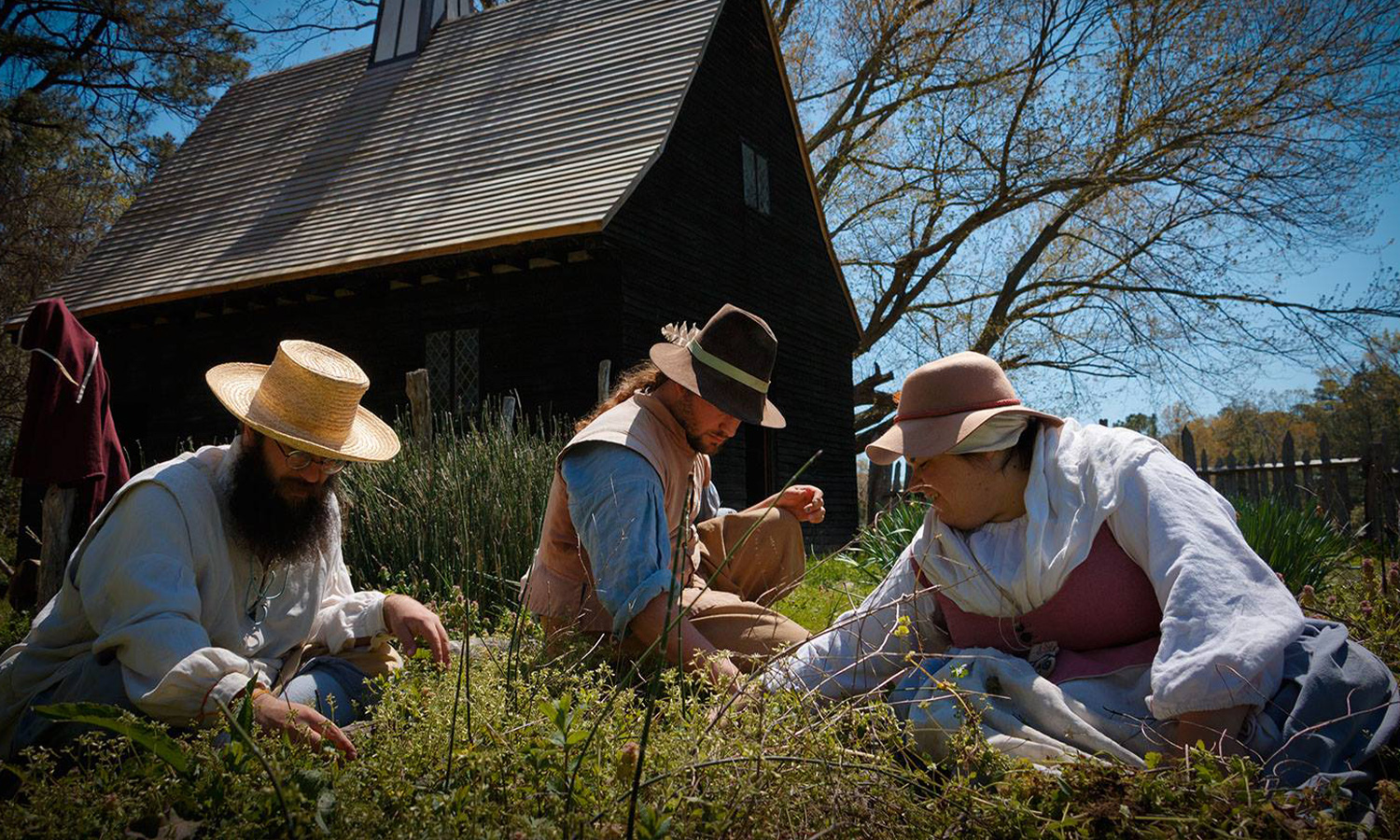
Road trip idea: Visit Historic St. Mary’s City and its museum of living history and archaeology. A one-mile loop will take you from the Visitor Center to the Woodland Indian Hamlet, Town Center, Maryland Dove, The Shop at Farthing’s Ordinary, the Brick Chapel of 1667, and back to the Visitor Center.
1776 – Four Marylanders Sign the Declaration of Independence
Of the fifty-six signers of the Declaration of Independence, four men, Charles Carroll, Samuel Chase, William Paca, and Thomas Stone, represented Maryland’s interests in breaking away from Great Britain’s colonial rule and to embark on the creation of a new democratic government in America.
Due to escalations in unrest associated with British occupation and taxation of the new colonies in America, lawyers, businessmen, and those well-connected and politically minded throughout the original thirteen colonies, all white males, established the Continental Congress. The First Continental Congress met in Philadelphia in 1774 and communicated regularly. Upon the second formal meeting of the Second Continental Congress in early July 1776, the draft Declaration of Independence was finalized and then approved on July 4, 1776.
Many Americans annually celebrate the fourth of July as Independence Day, yet the Declaration was not formally signed until a month later, including by the Maryland delegates, and the British did not surrender at Yorktown ending the Revolutionary War until 1783, a full seven years later.
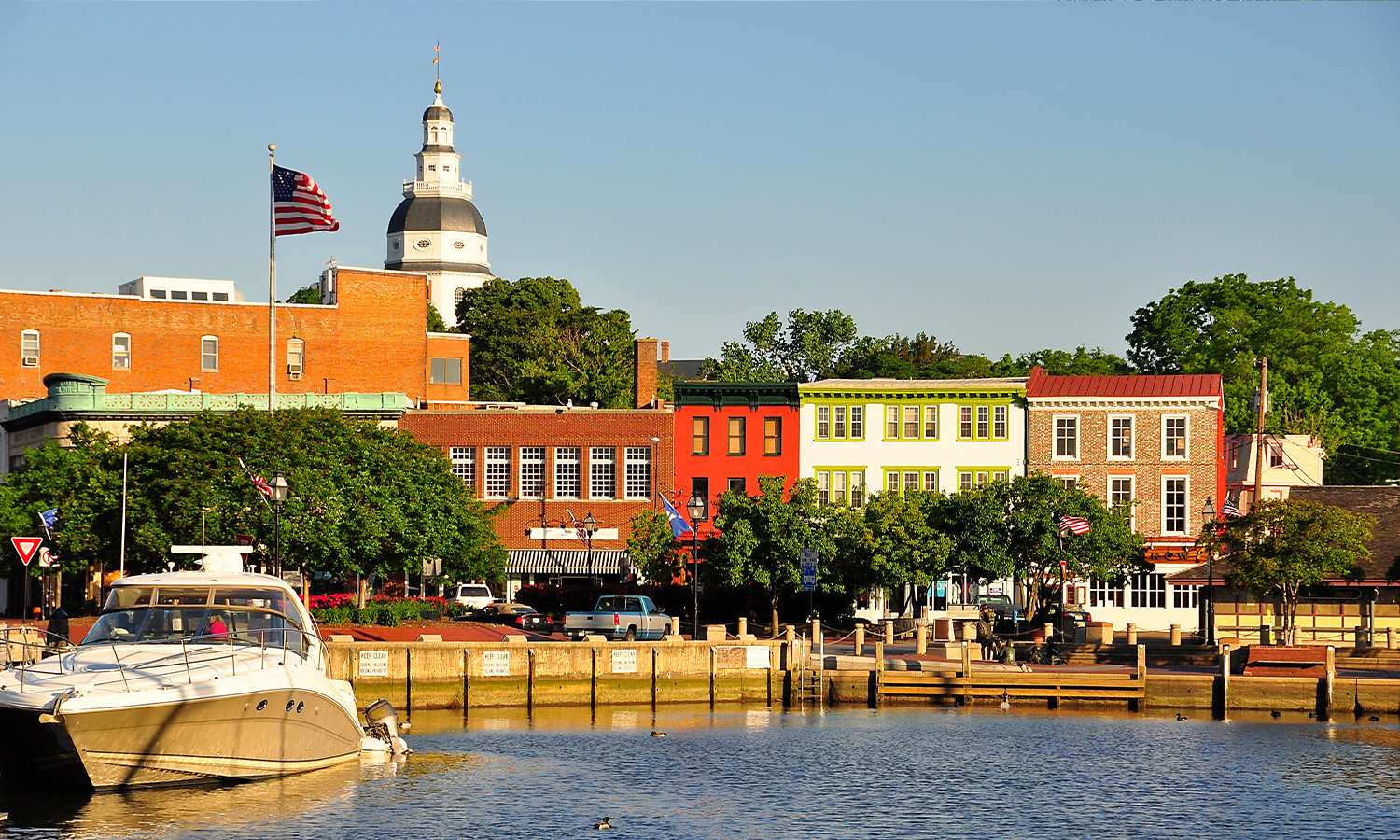
Road trip idea: Visit our state’s capital and the William Paca House and Garden, a Georgian mansion built in the 1760s by Paca, who was also the state’s third governor. Today it is recognized as one of the finest 18th-century homes in the country and a National Historic Landmark.
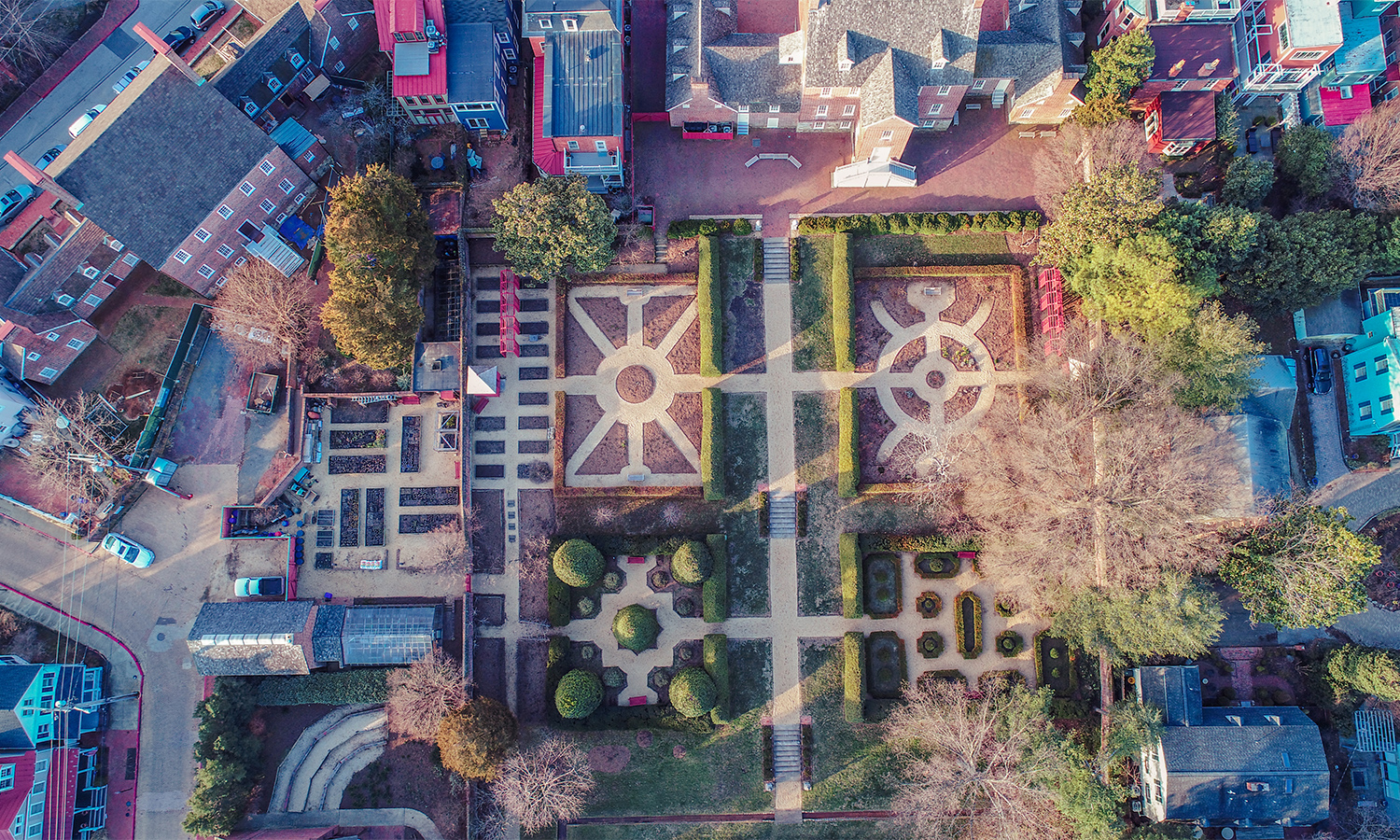
Guided tours of the house show the inner workings of an upper-class household in colonial and revolutionary Annapolis.
Or, head to Charles County and visit the home of Thomas Stone.
1827 – B&O Railroad Chartered by the State of Maryland
On February 28, 1827, Chapter 123 of the 1826 Session Laws of Maryland passed a law enabling the Baltimore and Ohio Railroad to be chartered as the first U.S. railway for commercial transport of passengers and freight. In addition, it was the first intercity railroad in the United States. Stakeholders in the B&O had hoped Baltimore, which was the second-largest U.S. city at the time, would successfully compete with New York for western trade.
It was not until May 24, 1830 when the first line of track opened. The track was a thirteen-mile stretch that followed the upper Patapsco and Monocacy rivers to the Potomac, ending in Ellicott’s Mills (now Ellicott City), Maryland. While it was not a long stretch by today’s standards, the track caused a lot of excitement due to the expedited travel times. However, the B&O still had skeptics because the steep, winding grades of the route were, at times, too hard for the horse-drawn coaches and wagons to handle. It wasn’t until after August 1830 that skeptics disappeared because the railroad adopted the steam-powered engine named the “Tom Thumb.”
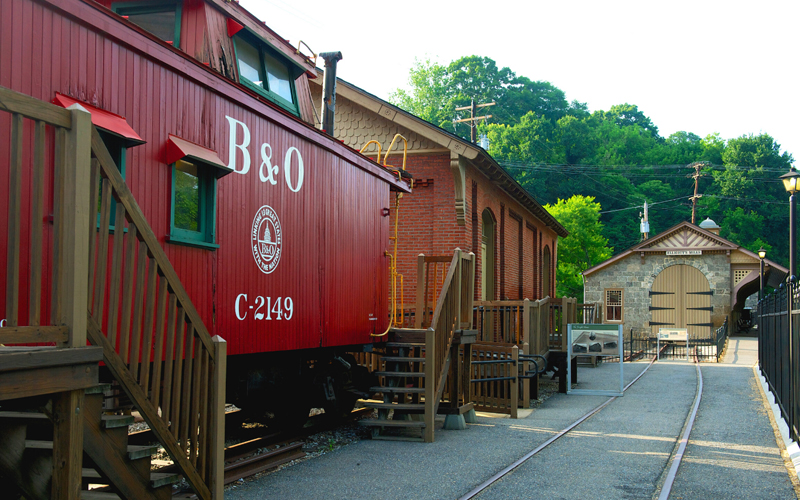
Road trip idea: Visit historic Ellicott City and the Baltimore & Ohio Ellicott City Station Museum. The Ellicott City Station is the oldest surviving railroad depot in America, and one of the oldest in the world.
1850 – Harriet Tubman Becomes a “Conductor” on the Underground Railroad
Araminta Ross (Tubman’s given name) Ross was born into slavery in Dorchester County, MD. In 1844, she entered into a marital union with a free black man named John Tubman. It was then that Ross took his last name and changed her name to Harriet, in honor of her mother.
In 1849, Harriet Tubman escaped from slavery, eventually making her way to Philadelphia, Pa. However, as a newly free woman, she did not forget her family and friends. Tubman returned to Maryland on numerous occasions to help the rest of her family escape from slavery, using the routes on the Underground Railroad; she very quickly became an adept conductor on the railroad. Even when slave owners posted a $40,000 reward for her capture, she did not back down. It is believed that Tubman alone rescued 70 people during her lifetime.
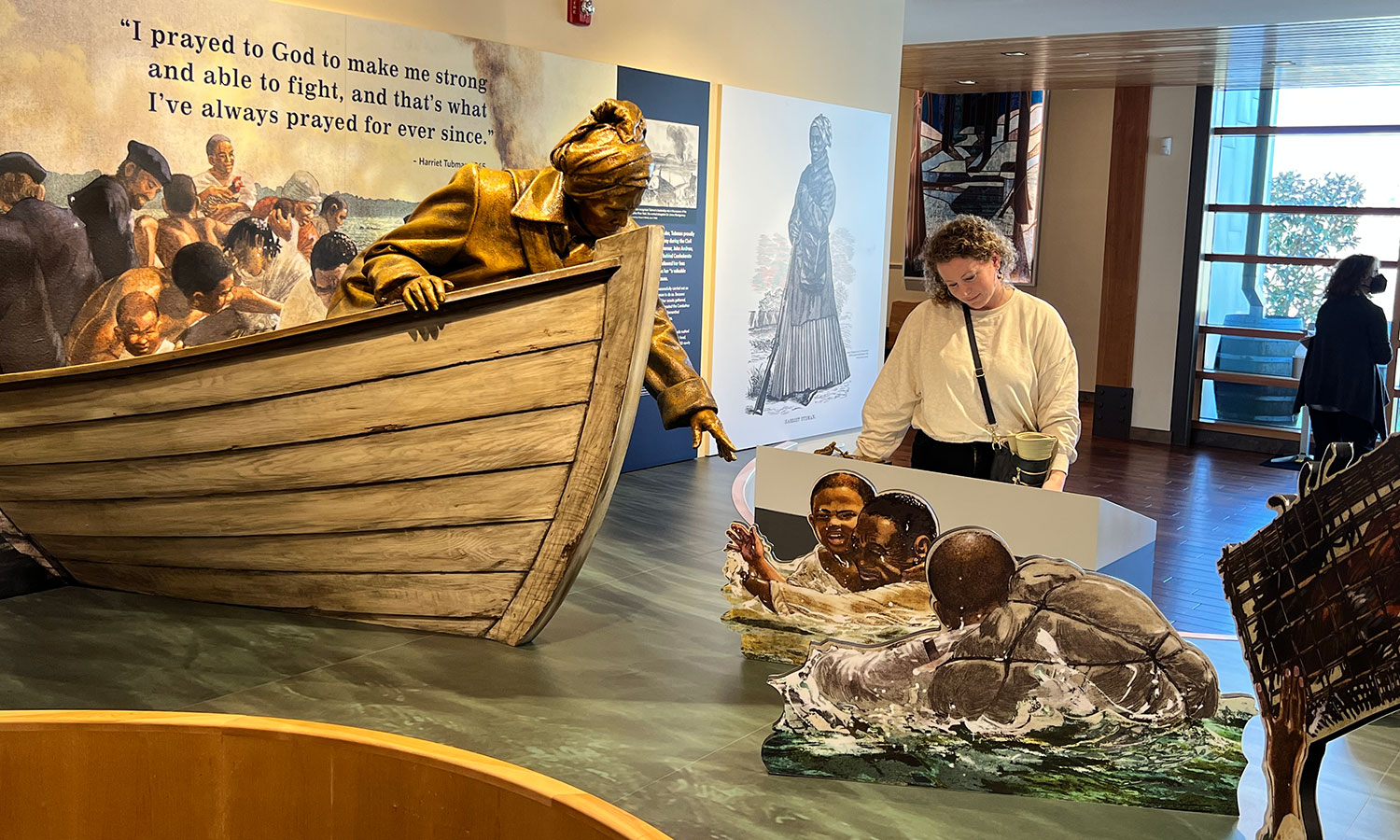
Road trip idea: Travel the Harriet Tubman Underground Railroad Byway. Begin in Cambridge on Maryland’s Eastern Shore and drive 125 miles through Dorchester and Caroline Counties in Maryland (before leaving the state and continuing for 98 miles through Kent and New Castle Counties in Delaware and then on to Philadelphia).
1952 – The Chesapeake Bay Bridge Opens
Ten-thousand spectators flowed in to watch the dedication of the Chesapeake Bay Bridge on July 30th, 1952. A car parade, led by then Governor Theodore Roosevelt McKeldin, crossed the bridge, marking its official opening. It was named after Governor William Preston Lane, who, during his time in office, had spearheaded efforts to construct the bridge. The second, westbound, span was completed in 1973.
In earlier years, the ferries could only transport a few hundred thousand cars across the Bay per year. When the Bay Bridge opened, it carried 30,000 vehicles across in the first three days! Now, it transports 20-30 million cars per year.
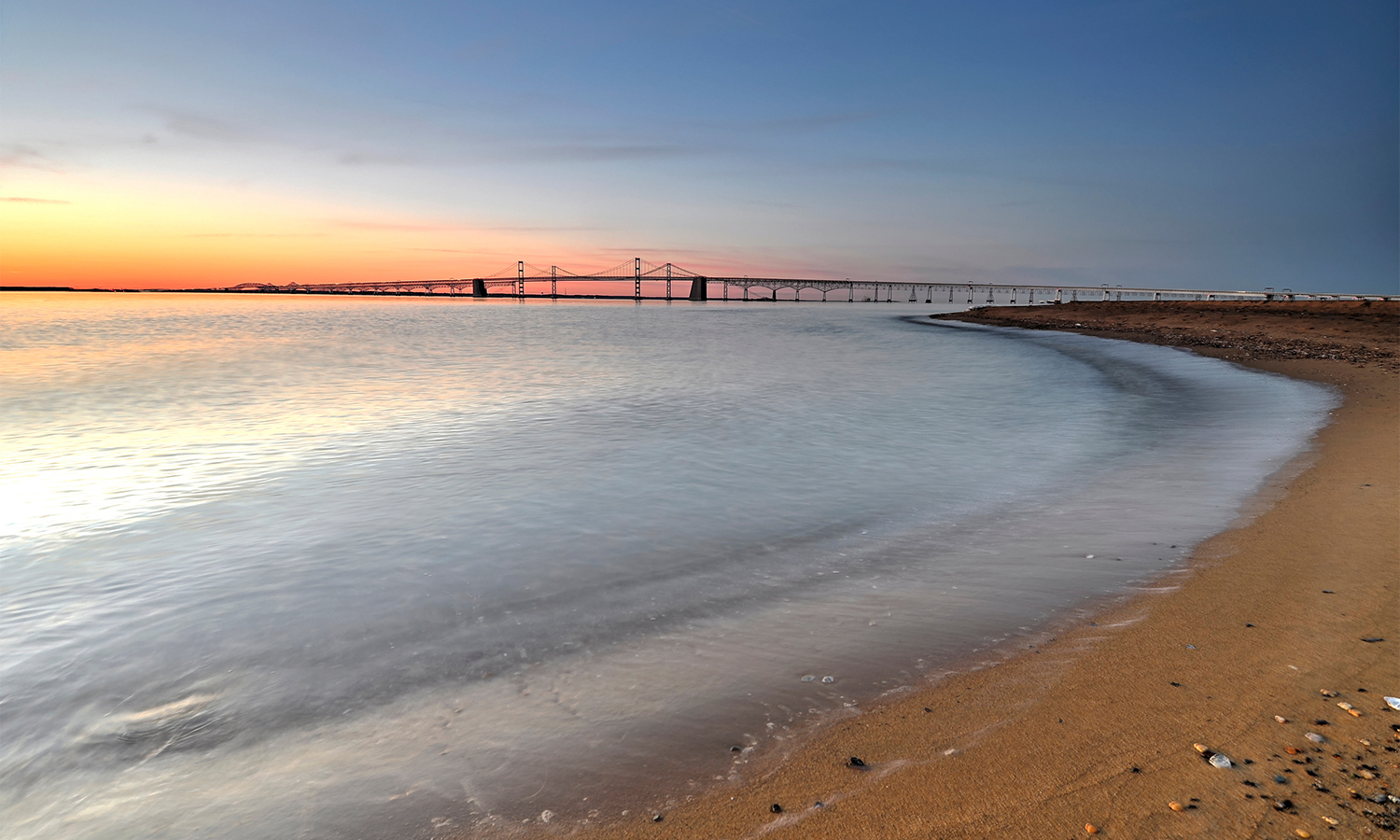
Trade opened up between the eastern and western shores, aiding agriculture and industry on either side, creating an economic link that unified the state like never before. The Bay Bridge earned three times the business of the ferries and paved the way for other bridges spanning the Chesapeake. Today, the only ferry that remains is the Oxford-Bellevue Ferry near St. Michael’s.
Road trip idea: Join the some 27 million cars that cross the Chesapeake Bay Bridge each year and head to Maryland’s Eastern Shore where you can pair history with fun at a these Eastern Shore destinations.
____
The original version of this article was first published on PreservationMaryland.org.
Lead Photo: Kevin Pinkerton
About the Author
Dana Cohen
Dana Cohen is the director of communications atPreservation Maryland. She works with their team and partners to tell the stories about their important preservation work and highlight what makes Maryland’s historic buildings, communities, and landscapes special. She currently lives in Towson with her husband, two kids, and two cats in a quaint cape cod.




